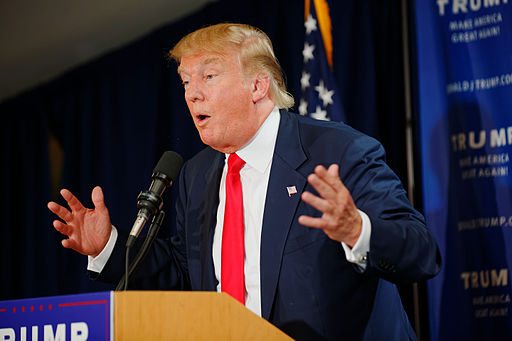
April 21, 2017; Washington Post
President Trump has talked about his generosity and big gifts to numerous nonprofits. Yet, research shows little more than a couple of theater seats and a park bench. How can someone who loves to put his name on everything have such a small impact?
David Fahrenthold of the Washington Post, who won the Pulitzer Prize for his series on Trump’s “philanthropy,” has some takeaways from the many articles he authored during the campaign. His research, which includes many decisions made when Trump thought people were not looking, reveals some things about the president’s personality that we ought to have taken as a promise of things to come. He writes,
Now that Trump is in the White House, some of the same behavior patterns have appeared again. There are three main lessons that we learned last year…and now seem to be learning again:
Sign up for our free newsletters
Subscribe to NPQ's newsletters to have our top stories delivered directly to your inbox.
By signing up, you agree to our privacy policy and terms of use, and to receive messages from NPQ and our partners.
- The president’s decision-making is guided more by personal relationships than abstract ideals, and by short-term goals rather than long-term strategy.
- The president’s social world is rather small, and the peer group he values most—seeking out their advice and company—is defined by wealth, and centered in South Florida and New York. In my charity reporting, I was surprised to find that Trump—a businessman with a global reputation, and a candidate with a zeal for forgotten voters in rural America—had given almost all his donations to charities in just two places: New York and Palm Beach.
- The president’s marketing strategy relies on promising big results—and he relies on the assumption that public promises will be kept. During my research, I went back and catalogued Trump’s promises to donate money to charity. I was struck by how many he’d made: in all, Trump’s public pledges after 2001 totaled $8.5 million or more. Usually, Trump didn’t name which charity he planned to help, which made it hard to check whether he’d kept his word. I searched far and wide, and found little evidence he did. I also found at least one case where Trump had made a specific pledge to a specific charity—a $250,000 promise to a charity that helps Israeli soldiers and veterans—and didn’t pay up. (Another unnamed person paid Trump’s pledge instead, the charity said.)
But, writes Fahrenthold, Trump seemed to suffer little reputational damage from all of this showy “don’t look behind the curtain” philanthropic behavior, even when it was exposed quite irrefutably. Does the Teflon ever wear off? Fahrenthold writes that we can already see it wearing thin.
Since his election, Trump has repeatedly used this tactic: promising major actions and revelations, and relying on the public belief that a president will keep promises. On a Saturday in late December, he promised to deliver major news about Russian hacking on “Tuesday or Wednesday.” He didn’t. Then, in January, he promised a major report on hacking “in 90 days.” This month, the 90th day passed with no report. He promised a “major investigation” into voter fraud during the 2016 election, but since then media reports have indicated that the investigation is going slowly, or not at all.
But this tactic is far harder to pull off now, because Trump and his promises are under far more scrutiny. This week, a Gallup poll found that only 45 percent of Americans believe Trump “keeps his promises,” a number that was down 17 points just since February.
Fahrenthold’s article is well worth reading for its sorting out of the personality traits that have carried through from Trump’s philanthropy to his presidency. And that may provide some further insight about when and how to respond to presidential actions taken.—Ruth McCambridge and Gayle Nelson













